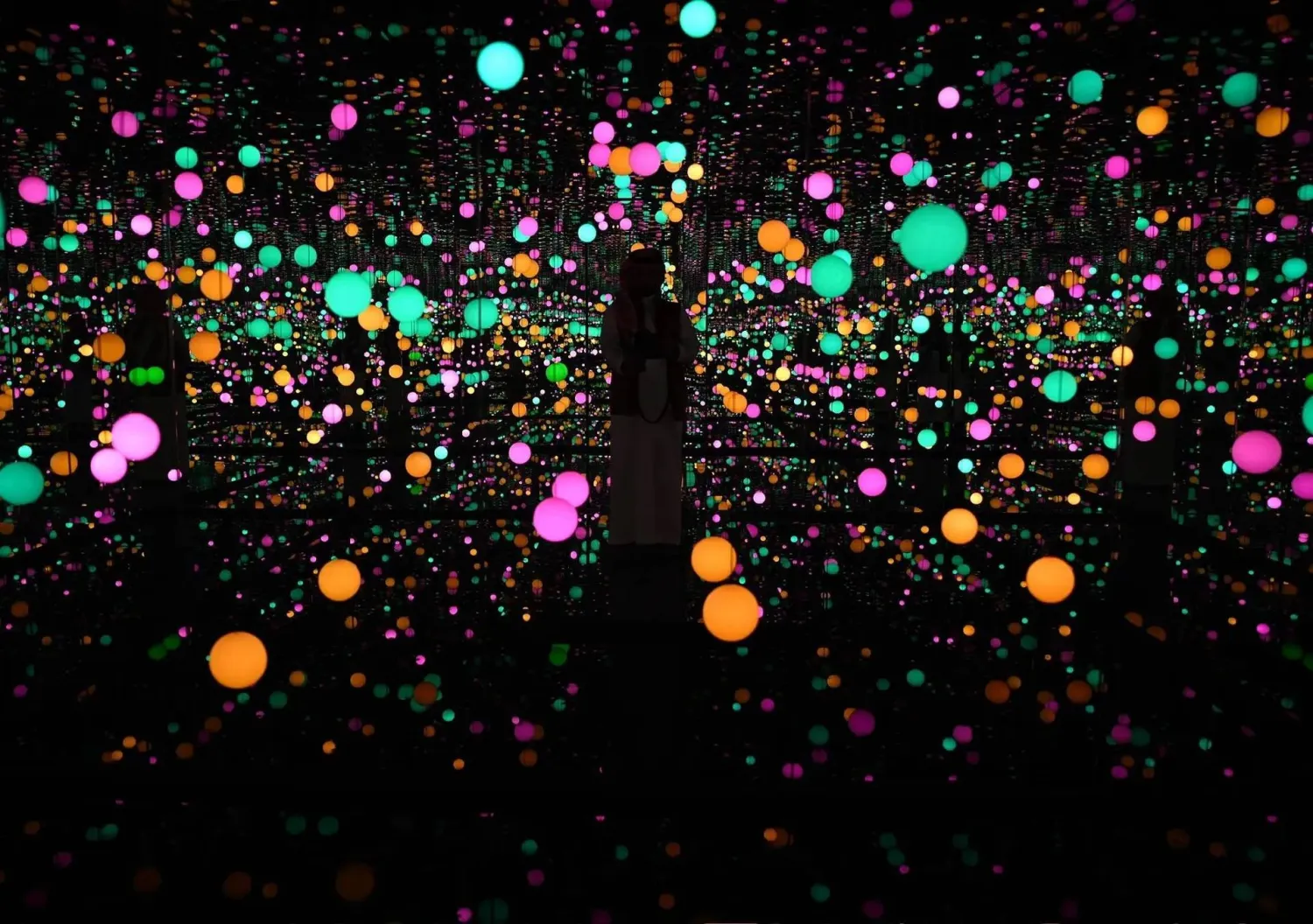The “Brilliance of the Souls” art piece is displayed in AlJadidah Arts District in AlUla governorate, which is part of the “Infinity Mirror Room” series, presented by Japanese artist Yayoi Kusama to the thriving art scene in the Kingdom, SPA said on Wednesday.
Visitors will experience a journey that travels into the Japanese artist's exceptional vision of endless contemplation, with a deceptively small space with reflective surfaces and water surrounding the central platform, where the artist's intellect is embodied in her ability to transform a narrow space into an infinite world of artistic expression.
Brilliance of the Souls is a stunning masterpiece and an ideal location for taking spectacular photos. The installation was created in harmony with the natural environment surrounding AlUla.
Multi-colored fields of light are hung at different heights and intervals from the ceiling, evoking images of celestial bodies, stars, planets, and galaxies. Viewing the masterpiece, one will be transported into an ethereal and limitless dimension.
Entry to Brilliance of the Souls art piece will be free and will be available from 4pm to 11pm over a span of two months.
Dazzling Art Piece 'Brilliance of Souls' by Japanese Artist in AlUla

The “Brilliance of the Souls” art piece is displayed in AlJadidah Arts District in AlUla governorate in Saudi Arabia.

Dazzling Art Piece 'Brilliance of Souls' by Japanese Artist in AlUla

The “Brilliance of the Souls” art piece is displayed in AlJadidah Arts District in AlUla governorate in Saudi Arabia.
لم تشترك بعد
انشئ حساباً خاصاً بك لتحصل على أخبار مخصصة لك ولتتمتع بخاصية حفظ المقالات وتتلقى نشراتنا البريدية المتنوعة







